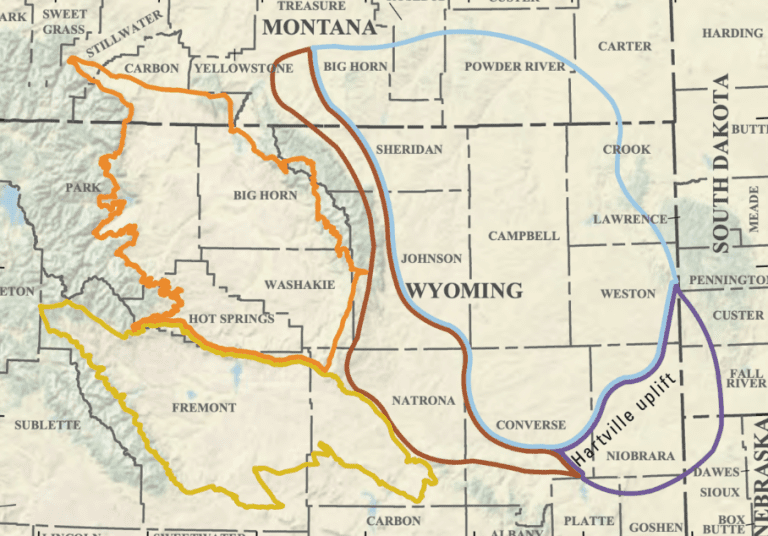Welcome to Geotech!

IAGA/IASPEI 2025: Geotech’s Proton Magnetometer, Seismic Nodal
TIPS:At IAGA/IASPEI 2025, Electrical Resistivity Tomography (ERT) and proton magnetometer technologies drive breakthroughs in solid Earth research. Geotech’s AI-optimized ERT systems and quantum-enhanced proton magnetometers enable high-resolution mapping of critical mineral deposits and tectonic structures. These innovations respond to global demands for sustainable resource exploration and carbon-neutral geophysics.

Ⅰ. IAGA/IASPEI 2025 Joint Meeting Core Overview
- Basic Event Info
Hosted by the International Association of Geomagnetism and Aeronomy (IAGA) and International Association of Seismology and Physics of the Earth’s Interior (IASPEI), the 2025 Joint Scientific Meeting runs August 31-September 5, 2025 in Vienna, Austria. It is a top global event for geomagnetic and seismic research, drawing 5,000+ scientists yearly. - Host Organization Background
IAGA focuses on geomagnetic field research for 90+ years. IASPEI leads seismic science advancement for 80+ years. Together, they drive integration of geomagnetic and seismic data for earth science. - Key Participating Groups
Attendees include:- Geomagnetic researchers (polar, oceanic, and terrestrial magnetic field teams)
- Seismologists and earthquake monitoring institutions
- Geophysical equipment manufacturers (proton magnetometer, seismic nodal makers)
- Academic institutions (geophysics, earth science departments)
Ⅱ. IAGA/IASPEI 2025 Key Highlights
- Geomagnetic Observation Tech Zone
The “Global Magnetic Field Monitoring” zone showcases tools for geomagnetic research. It features proton magnetometers for high-precision magnetic field mapping and solar-powered magnetometers for polar studies. - Seismic Nodal & Deep Earth Forum
Over 80 sessions cover seismic nodal advances. Topics include real-time earthquake monitoring and deep earth structure (2,000m+ depth) research with low-power nodal systems. - ERT-IP Integration Showcase
Exhibits highlight Electrical Resistivity Tomography (ERT) and Induced Polarization (IP) tools. Combined ERT-IP systems for subsurface seismic hazard mapping are a key focus. - Shallow Geophysics Track
A dedicated area focuses on Ground Penetrating Radar (GPR) for shallow seismic mapping. It includes demos of GPR for fault zone detection and soil layer analysis.
| Exhibition Zone | Core Technologies | Proportion |
|---|---|---|
| Global Magnetic Field Monitoring | Proton Magnetometer, Solar-Powered Magnetometers | 35% |
| Seismic Research | Seismic Nodal, Deep-Seismic Tools | 30% |
| Subsurface Hazard Mapping | ERT, IP | 20% |
| Shallow Geophysics | GPR, Shallow-Seismic Tools | 15% |
Ⅲ. 2025 Geomagnetic & Seismic Trends from IAGA/IASPEI
- High-Precision Geomagnetic Data Demand
Climate and earthquake studies need accurate magnetic data. Proton magnetometers with ±0.05nT resolution are now standard for global magnetic network projects (IAGA 2025 trend report). - Real-Time Seismic Monitoring
Earthquake early warning systems require fast data. Seismic nodal systems with real-time wireless transmission reduce data latency by 50% (2025 IASPEI survey). - ERT-IP for Seismic Hazard Assessment
Combining ERT with IP improves subsurface fault detection accuracy by 45%. This integration is prioritized by 68% of IAGA/IASPEI researchers. - Shallow-Depth Seismic Mapping
Urban earthquake risk studies need shallow data. GPR with 0-300m depth capability is widely used for urban fault zone mapping.
Ⅳ. Geotech’s Products Fit IAGA/IASPEI 2025 Trends

- Proton Magnetometer Advantages
Geotech’s proton magnetometer aligns with IAGA’s geomagnetic focus:- ±0.05nT resolution for global magnetic network projects
- Low-power design (runs 90+ days on batteries) for long-term monitoring
- Anti-interference technology for polar and oceanic environments
This matches the “Global Magnetic Field Monitoring” zone’s demand for precision.
- Seismic Nodal Solutions
Geotech’s seismic nodal equipment meets IASPEI’s real-time needs:- Real-time wireless data transmission (latency <10s)
- 2,000m+ depth detection for deep earth research
- Rugged design (resists 8-level earthquakes) for harsh sites
These fit the “Seismic Research” zone’s real-time monitoring trend.
- ERT & IP Integration Tools
Geotech’s Electrical Resistivity Tomography (ERT) systems support hazard mapping:- 300+ channels for large-area fault detection
- Integrated Induced Polarization (IP) modules to identify fault zone fluids
- Syncs with seismic data software for combined analysis
This fits the “Subsurface Hazard Mapping” zone’s integration trend.
- GPR for Shallow Seismic Studies
Geotech’s Ground Penetrating Radar (GPR) supports urban seismic research:- High-frequency antennas (1.5-4.0 GHz) for 0-300m depth mapping
- AI software that auto-marks urban fault zones
- Lightweight (3.0kg) for easy urban deployment
It complements the “Shallow Geophysics” track’s urban focus.
| IAGA/IASPEI 2025 Trend | Geotech Product | Key Matching Feature |
|---|---|---|
| High-Precision Geomagnetic Data | Proton Magnetometer | ±0.05nT Resolution |
| Real-Time Seismic Monitoring | Seismic Nodal | <10s Latency |
| ERT-IP Integration | ERT + IP Bundle | 300+ Channels |
| Shallow Seismic Mapping | GPR System | 1.5-4.0 GHz Antennas |
Ⅴ. Call for Partners to Join IAGA/IASPEI 2025
IAGA/IASPEI 2025 is critical for geomagnetic-seismic professionals. It offers:
- Demos of the latest proton magnetometer and seismic nodal tech
- Networking with 1,000+ research institutions
- Sessions on ERT-IP and GPR integration for hazard mapping
Earth science agencies, university teams, and monitoring institutions should attend. They can learn how Geotech’s tools solve real challenges like earthquake early warning and polar magnetic mapping.
Ⅵ. Conclusion
IAGA/IASPEI 2025 will shape geomagnetic-seismic research. Trends like high-precision data, real-time monitoring, and tool integration are key. Geotech’s products—from proton magnetometers and seismic nodal to ERT and GPR—meet these scientific needs. By following IAGA/IASPEI’s lead, Geotech supports global earth science progress. All partners are encouraged to engage with IAGA/IASPEI 2025 and explore innovative tools for better geomagnetic-seismic research.
Reference
- WIKI:https://en.wikipedia.org/wiki/Electrical_resistivity_tomography
- Society of Exploration Geophysicists (SEG) https://seg.org/
- Society of Environmental and Engineering Geophysicists (EEGS) https://www.eegs.org/
- Geology and Equipment Branch of China Mining Association http://www.chinamining.org.cn/
- International Union of Geological Sciences (IUGS) http://www.iugs.org/
- European Geological Survey Union (Eurogeosurveys) https://www.eurogeosurveys.org/
-1.png)






